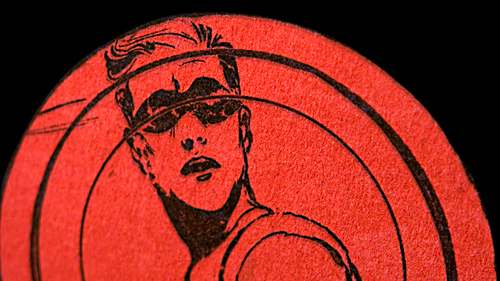Many say that the hardest part of writing a paper is the introduction and conclusion ““ synthesizing an entire body of work into five to eight sentences requires nuance, creativity and the ability to capture the reader’s attention until the very end.
Title sequences for big budget films provide this same function of setting the mood and drawing in an audience. Collaborating with a film’s director, title designers are hired to create short opening and closing scenes with the names of the film’s cast and crew.
Today, the Hammer Museum and the Submarine Channel present the Flux film screening series, which will feature the works of five notable designers that have made their marks on title sequence design.
“The opening and closing titles are sometimes better than the movie themselves,” said Jonathan Wells, curator of the Flux film screenings. Wells also said that this is the first time the five featured designers will be together at the same event.
These designers’ work ranges far across the cinematic landscape. From indendepent dramas such as”The Prizewinner of Defiance, Ohio” to children’s films like “Madagascar: Escape 2 Africa.” From broad comedies including “Tropic Thunder” to modern-day film noir in “Kiss Kiss Bang Bang.”
The art of title design is never simple. The designer needs to establish the movie’s tone while creatively displaying the typography (titles). This means constant collaboration with the film’s director, who has the ultimate say in the title’s final product.
With the opening scene of the early 2009 film “Watchmen,” the original concept of the character’s back story envisioned behind Bob Dylan’s “The Times They are A-Changing” came directly from director Zack Snyder. The challenge for the film’s title designer Garson Yu, who will be present at the event, was incorporating the typography into scenes that were shot without titles in mind.
“Typography is an interesting creature,” Yu said. “It is positioning it in a place that can totally change the perception of the picture.”
He also said that there are some technical tricks that can help in creating interesting effects.”The lighting is interacting with the graphic title as the camera is moving. It is a subtle trick but looks simple so everything is seamless,” Yu said.
However, other film titles allow more autonomy for title designers.
Kyle Cooper, one of the other featured designers, has worked on over 150 titles and is one of Hollywood’s go-to guys for title sequences. His critically praised sequence for “Se7en” changed the concept of title designs from white text on black background to something that can stand alone as its own short film.
“Ideally a main title can make somebody feel that there’s no place in the world they would rather be than in that movie,” Cooper said.
Cooper spent a total of eight years in college pursuing his dreams as an artist to make it to where he is today.
“There was not a lot of encouragement with the exception of my mother to be an artist, and I wouldn’t let people discourage you from being creative. … Creativity is almost as important as literacy,” he said.
For the first “Spider Man,” Cooper used the typography as a metaphor for flies caught in a web, which as the camera pans out, reveals the face of the Green Goblin. “It’s like giving somebody a riddle, and they can unpack it and find more meaning when they think about it,” Cooper said.
The metaphoric and creative use of typography should be the “star of the sequence” according to Karen Fong, a protege of Cooper’s. Fong’s work for the upcoming “Terminator Salvation” reinvented the way military machines see language.
“It creates excitement on a certain specific point of a bigger story,” Fong said. One of her favorite title sequences was from the 1998 film “Dead Man on Campus” in which she wove a college urban legend into exam questions and diagrams.
“Obviously if a title sequence does its job, it’s building anticipation for the movie and giving you the atmosphere, mood and genre of the movie you’re about to see,” said designer Jamie Caliri. He said that his style of title designing is more like filmmaking than graphic design.
“When you’re putting someone’s name up there, you should be really owing them some respect.”
Caliri’s most praised and favorite title sequence was his work on the end credits for “Lemony Snicket’s: A Series of Unfortunate Events.”
“The ideas came from reading the first three books,” he said. “We knew we wanted the tone to have a paper puppet feel.”
At five minutes, the end sequence follows the protagonists’ through a dark series of short animated vignettes.
Yu, for one, believes that title sequencing is an art form in its own right.
“There’s a story behind each title, and it always reflects the creators thinking,” he said. “It’s a place for our passions and ideas, and not a generic way of placing titles.”
